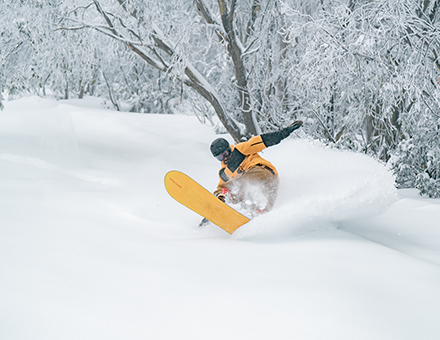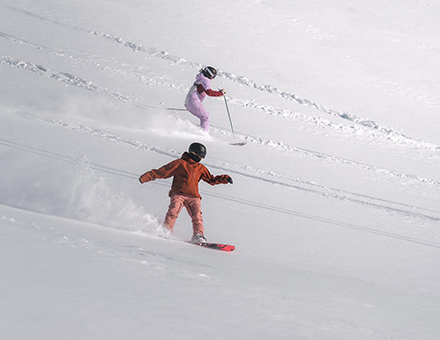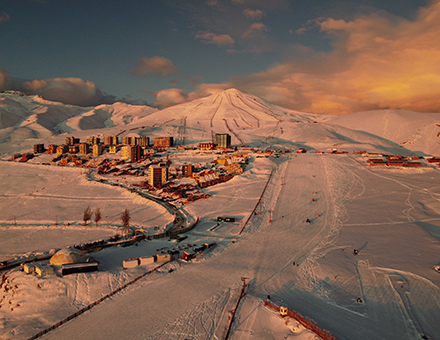SAM Magazine—Perisher Valley, Australia, Oct. 14, 2025—The Southern Hemisphere’s 2025 season has ended, with a mix of winners and losers, as usual. After pre-season forecasts of likely lacklustre snow conditions for Australia, it turned out to be one of the best winters of the 21st century. Falls Creek Alpine Resort, Australia In contrast, after a bumper snow season in 2024, Argentina’s ski areas struggled with warmer and drier weather than average and battled to open much terrain all season.
Falls Creek Alpine Resort, Australia In contrast, after a bumper snow season in 2024, Argentina’s ski areas struggled with warmer and drier weather than average and battled to open much terrain all season.
In terms of infrastructure developments, Australia opened a "game-changing" new highest lift, New Zealand has a new biggest area thanks to a terrain expansion, and the Andes saw growing interest from North American corporate buyers.
Here’s the lowdown.
Australia
It was a return to form in terms of snow cover and length of season for Australia. Snow fell through the season, allowing Aussie resorts to open more terrain for longer and resulting in cumulative season totals exceeding 150 inches, a very healthy number for the country. Most resorts were open for skiing and riding every day from the traditional season-start long weekend in early June through the long Labour Day weekend in early October.
“We couldn’t have been happier with the season, from the excitement of the snowfall on opening weekend to the many significant snow dumps we experienced throughout the season right up to snow falling in our closing week in October,” said Nathan Butterworth, VP and GM Perisher Ski Resort, the country’s largest.
“Twenty-twenty five was a history-making season with the launch of our Mt Perisher 6 high-speed six-seater chairlift," he added. "Guests loved the comfort and speed of the lift as well as the terrain it has opened up." The new chair replaced other older lifts, and thus simplified resort operations as well.
New Zealand
In New Zealand, the biggest news going into winter 2025 was arguably Cardrona Alpine Resort's Soho Basin expansion, which added 370 acres of new terrain to make it the country’s biggest ski area.
The winter itself was mixed, with periods of mild weather scuppering base build-up in the early season for many of the country's private club fields. Temple Basin Ski Area didn't open until late August, after a mighty late-season dump.
 Cardrona Alpine Resort, New ZealandNew Zealand’s commercial resorts, though, did manage to open pretty much as scheduled, mostly thanks to snowmaking.
Cardrona Alpine Resort, New ZealandNew Zealand’s commercial resorts, though, did manage to open pretty much as scheduled, mostly thanks to snowmaking.
"Winter 2025 was a game of two halves. The early season was limited, and it was incredible to see the work our snowmaking and grooming team did to get almost all our lifts and terrain, including halfpipes, open on man-made snow alone," said Laura Hedley, chief mountains officer for Cardrona and Treble Cone. "The second half of the season saw fantastic snowfall, particularly in September."
She continued, "We were humbled to see the support for our ski areas from both domestic and international visitors. This was one of our biggest winters to date in terms of numbers, and excitingly, we're seeing growth in those choosing to ski and snowboard with us for multiple days. This gives us confidence we're delivering great ‘manaakitanga’ (generosity and respect) to our guests.”
On the North Island, the two ski areas that comprised the now-defunct Ruapehu Alpine Lifts Ltd are now operating independently. Both areas now have a much more positive outlook, and Whakapapa reported business levels up.
South Africa
Southern Africa’s ski season ran to schedule, with Lesotho’s Afriski opening as planned at the start of June and closing at the end of August. It maintained its full mile or so of slopes, thanks to snowmaking. However, the region’s other commercial field, Tiffendell, remains out of action and up for sale. It has not operated since before the pandemic.
Argentina
After the bumper winter of 2024, Argentina struggled with mild, dry conditions for much of the 2025 season, and most of the country's resorts struggled to open terrain. That was most noticeable at South America's largest ski area, Cerro Catedral near Bariloche, which only opened very limited terrain all winter.
There were a few big dumps; PowderQuest reported Las Leñas had had 40 inches in late June, but the falls were too few and far between. Sections of the mountain were closed for stretches of the season. The exception to the poor condition was the world’s most southerly resort, Cerro Castor, in Ushuaia in the Tierra del Fuego province. There, Antarctic proximity ensured cold weather all winter, allowing most slopes to open and great training conditions for Mikaela Shiffrin and the U.S. and other national ski teams in September.
Chile
 Valley Nevado, ChileThe big news from Chile going into the season was that Mountain Capital Partners (MCP) was taking a controlling stake in Andacor, which owns four Chilean ski areas, a process that remains ongoing. The resorts to be acquired include La Parva, the one remaining ski area in the Tres Valles area east of the capital Santiago that MCP doesn't already own. MCP previously stated its aim of ultimately making the Tres Valles the world’s largest ski area.
Valley Nevado, ChileThe big news from Chile going into the season was that Mountain Capital Partners (MCP) was taking a controlling stake in Andacor, which owns four Chilean ski areas, a process that remains ongoing. The resorts to be acquired include La Parva, the one remaining ski area in the Tres Valles area east of the capital Santiago that MCP doesn't already own. MCP previously stated its aim of ultimately making the Tres Valles the world’s largest ski area.
Like Argentina, Chile was coming off a bumper 2024, and memories of that translated into healthy business growth for some Chilean resorts this winter, too, even though snowfall was down from the previous year’s record.
Valle Nevado was a standout, consistently posting the deepest snow on the continent and having all terrain open. By early October, it had received 174 inches of snowfall, including a major storm that delivered five feet of fresh snow just in time for peak season skiing and elite athlete training. Its season was due to conclude on Oct. 19 after 129 consecutive days.
“A nearly 30 per cent increase in visitation this winter reflects both the strength of our brand and the growing recognition of Valle Nevado as a world-class destination for skiers from across South America and beyond,” said Richard Margulis, general manager of Valle Nevado.
Reporting by Patrick Thorne.




